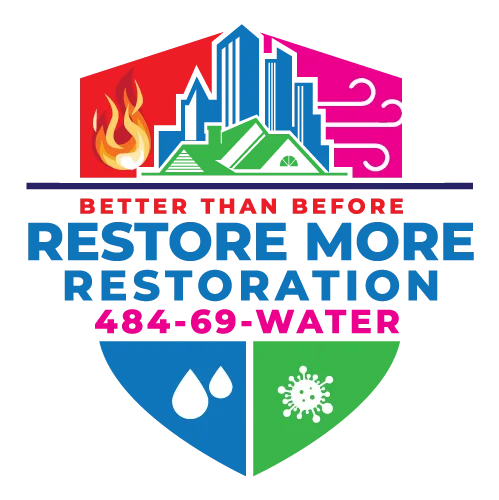The Hidden Dangers of Rainwater Damage: Why Professional Restoration Matters
When rainwater invades your home, every minute counts. As a restoration professional, I’ve seen countless situations where delayed or inadequate response to rainwater damage led to devastating consequences. Let me explain why professional restoration isn’t just helpful – it’s crucial.
Why Rainwater Damage Is Deceptively Dangerous
Most people see rainwater as “clean water,” but the reality is far more complex:
- Rainwater can become contaminated as it travels through damaged roofs and building materials
- It follows hidden paths within walls and under floors
- It can reach areas of your home you can’t see or access
- Moisture can persist long after surfaces appear dry
- Without proper treatment, it creates perfect conditions for mold growth
The Professional Difference in Water Damage Restoration
Advanced Detection Methods Consumer-grade moisture meters only tell part of the story. We use:
- Thermal imaging cameras to track water migration
- Professional-grade moisture meters that detect water in walls
- Hygrometers to monitor ambient humidity levels
- Surface readers to verify when materials are truly dry
Strategic Drying Processes Our approach isn’t just about setting up fans. We:
- Calculate requirements for dehumidification
- Position air movers for maximum efficiency
- Monitor moisture levels throughout the process
- Adjust equipment placement based on drying progress
- Document everything for insurance purposes
How Rainwater Damage Affects Different Building Materials
As a restoration professional, I’ve seen firsthand how rainwater can affect various building materials differently. Let me break down the specific impacts and why professional intervention is crucial.
Structural Materials
Wood Components
- Absorbs moisture quickly, leading to swelling and warping
- Can develop rot if left untreated
- Creates perfect conditions for mold growth
- May compromise structural integrity over time
Concrete and Masonry
- Though generally resistant, it can still be affected by prolonged exposure
- May develop cracks from freeze-thaw cycles
- Can experience efflorescence (white mineral deposits)
- Internal reinforcement may rust if water penetrates deeply
Interior Materials
Drywall and Plaster
- Highly susceptible to water damage
- Can lose structural integrity quickly
- Often requires replacement if saturated
- May harbor mold growth behind surfaces
Hardwood Floors
- Can cup, crown, or buckle when exposed to moisture
- Requires specialized drying techniques
- It may need refinishing or replacement
- Quick response is crucial to prevent permanent damage
Exterior Components
Siding and Paint
- Can deteriorate with prolonged exposure 1
- May develop gaps, allowing further water intrusion
- Paint can bubble, peel, or blister
- Creates potential entry points for more water damage
Hidden Dangers
Building Cavities
- Water can travel unseen through walls and ceilings
- Creates perfect conditions for mold growth
- May compromise insulation effectiveness
- Often requires professional detection equipment
Why Professional Response Matters
The complexity of how different materials react to water damage requires:
- Immediate professional assessment
- Proper drying protocols for each material type
- Continuous monitoring of moisture levels
- Prevention of secondary damage
Remember: What looks like minor water damage on the surface can hide serious issues within your building materials. Professional restoration ensures all affected materials are properly dried or replaced to prevent long-term problems.
Common DIY Mistakes That Lead to Bigger Problems
- Inadequate Water Extraction
- Consumer wet vacs leave behind significant moisture
- Hidden water continues to cause damage
- Materials remain saturated below the surface
- Insufficient Drying
- Household fans and dehumidifiers lack the necessary power
- Moisture remains trapped in building materials
- Creates perfect conditions for mold growth
- Missing Hidden Damage
- Water can travel far from visible entry points
- Damage often occurs in concealed spaces
- Problems compound when left untreated
The Restore More Restoration Approach
When you call us, you get a comprehensive solution:
Immediate Response
- 24/7 emergency service
- Rapid deployment of equipment
- Quick action to prevent further damage
Professional Assessment
- Thorough inspection of affected areas
- Identification of all water migration paths
- Documentation of damage for insurance
- Development of a detailed restoration plan
Expert Execution
- Industrial-grade water extraction
- Strategic placement of drying equipment
- Continuous monitoring of moisture levels
- Adjustment of drying strategy as needed
Prevention of Secondary Issues
- Mold prevention measures
- Structural integrity checks
- Air quality monitoring
- Complete documentation
Long-Term Benefits of Professional Restoration
Choosing professional restoration provides:
- Prevention of structural weakening
- Protection against mold growth
- Preservation of building materials
- Documentation for future reference
- Peace of mind knowing it’s done right
Insurance Considerations
Professional restoration also helps with insurance:
- Detailed documentation of damage
- Proper moisture readings and photography
- Professional assessment reports
- Communication with adjusters
- Compliance with insurance requirements
Don’t Take Chances with Rainwater Damage
While it might be tempting to handle rainwater damage yourself, the risks are simply too high. At Restore More Restoration, we bring:
- Years of experience
- Professional equipment
- Proven techniques
- Comprehensive documentation
- Insurance expertise
Let us help you avoid the hidden dangers of rainwater damage. Contact me, Danielle Mortimer, at Restore More Restoration. We’ll ensure your home is properly restored and protected for the future.
Remember: The cost of professional restoration is always less than repairing damage from inadequate treatment.
Don’t wait until minor problems become big ones – call us at the first sign of water damage.


